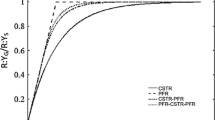Abstract.
Suspension-feeding bivalves are adapted to use a highly variable mixture of particles by sorting them before and after ingestion. Postingestive sorting in bivalves has been confirmed for several bivalve species, but few studies have attempted to isolate the factors influencing postingestive selection among different particles presented simultaneously. The ability of the sea scallop, Placopecten magellanicus (Gmelin), to sort a mixture of organic (14C-labeled dinoflagellates, Prorocentrum minimum) and inorganic (51Cr-labeled beads, diameter 16–18 µm) particles of similar size and shape within the stomach was examined. The study was carried out in August 1997 using scallops collected near Deer Island, New Brunswick, Canada. Sorting of the two particle types was measured by dissecting the scallops at intervals after feeding and comparing the 14C:51Cr ratios within the stomach, digestive gland, and feces. The 14C:51Cr ratio in the stomach decreased over time, indicating that sea scallops were sorting organic from inorganic particles. The ability of P. magellanicus to sort particles solely on the basis of chemical properties was tested in a second study by presenting them with a mixture of protein-coated and uncoated beads of two different colors. This study was carried out in February 2000 using scallops collected near Maces Bay, New Brunswick, Canada. Gut retention times of the two types of beads were measured using flow cytometry. Scallops retained protein-coated beads in the gut longer than uncoated beads, indicating postingestive selection by chemical properties. This study provides the first evidence for simultaneous postingestive sorting by bivalves of particles based solely on chemical properties. This would potentially enable P. magellanicus to preferentially retain particles of higher food quality longer than those of poor quality, thereby enhancing digestive efficiency.
Similar content being viewed by others
Author information
Authors and Affiliations
Additional information
Electronic Publication
Rights and permissions
About this article
Cite this article
Brillant, .M., MacDonald, .B. Postingestive selection in the sea scallop (Placopecten magellanicus) on the basis of chemical properties of particles. Marine Biology 141, 457–465 (2002). https://doi.org/10.1007/s00227-002-0845-2
Received:
Accepted:
Issue Date:
DOI: https://doi.org/10.1007/s00227-002-0845-2




